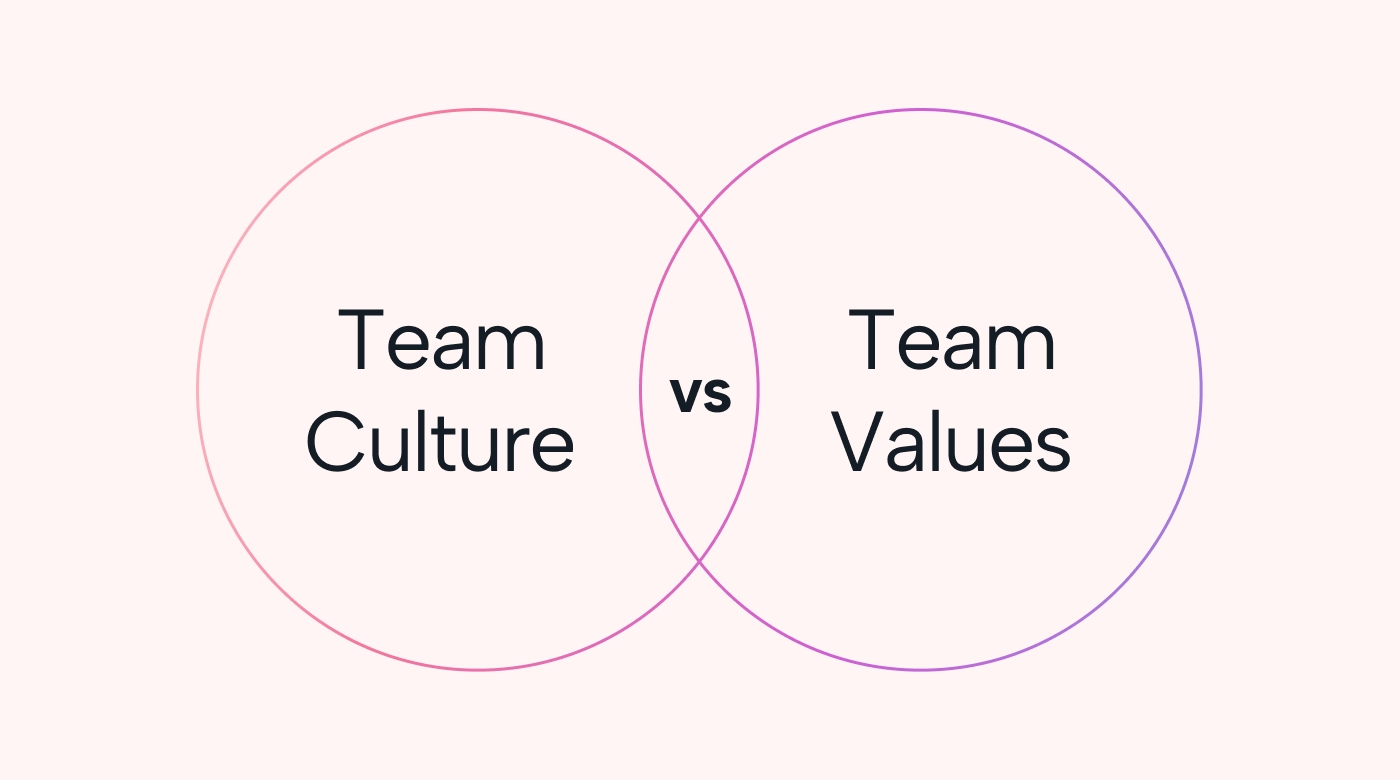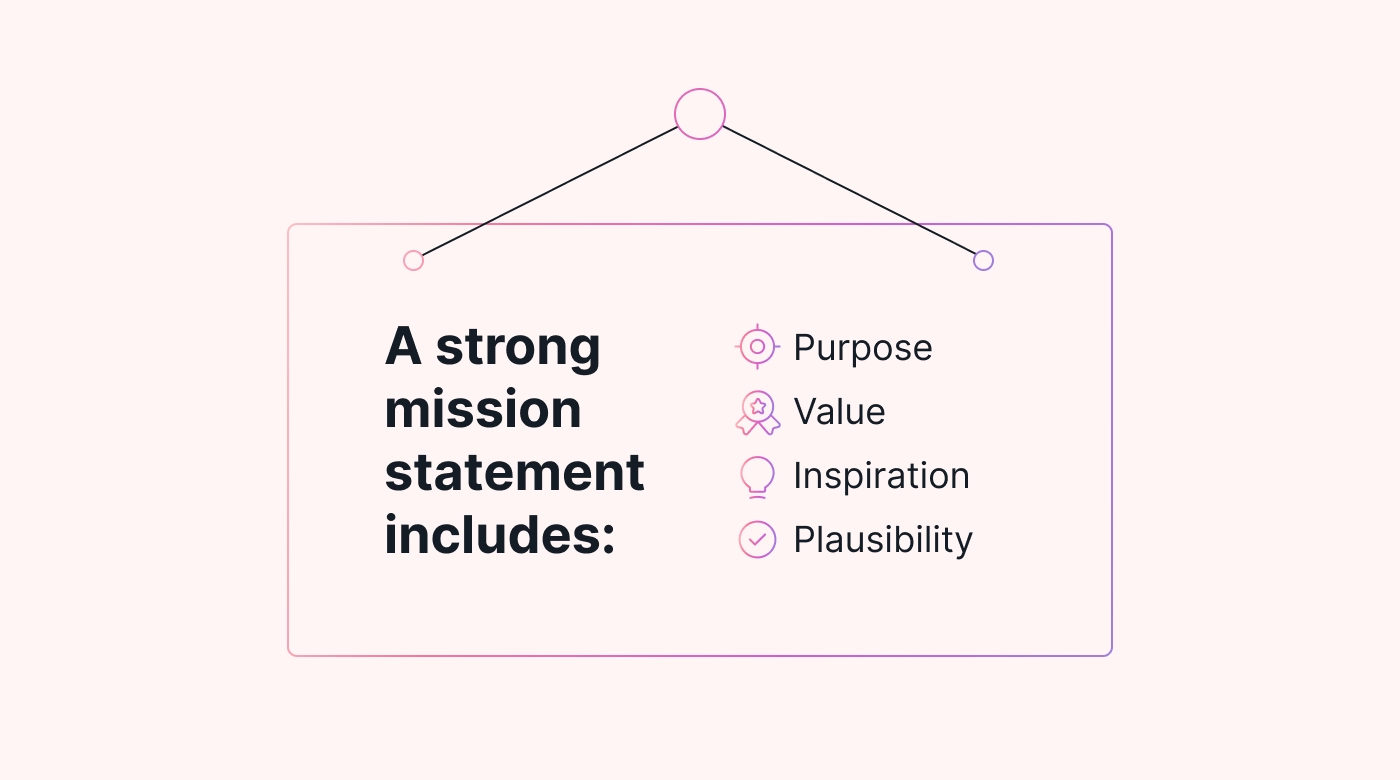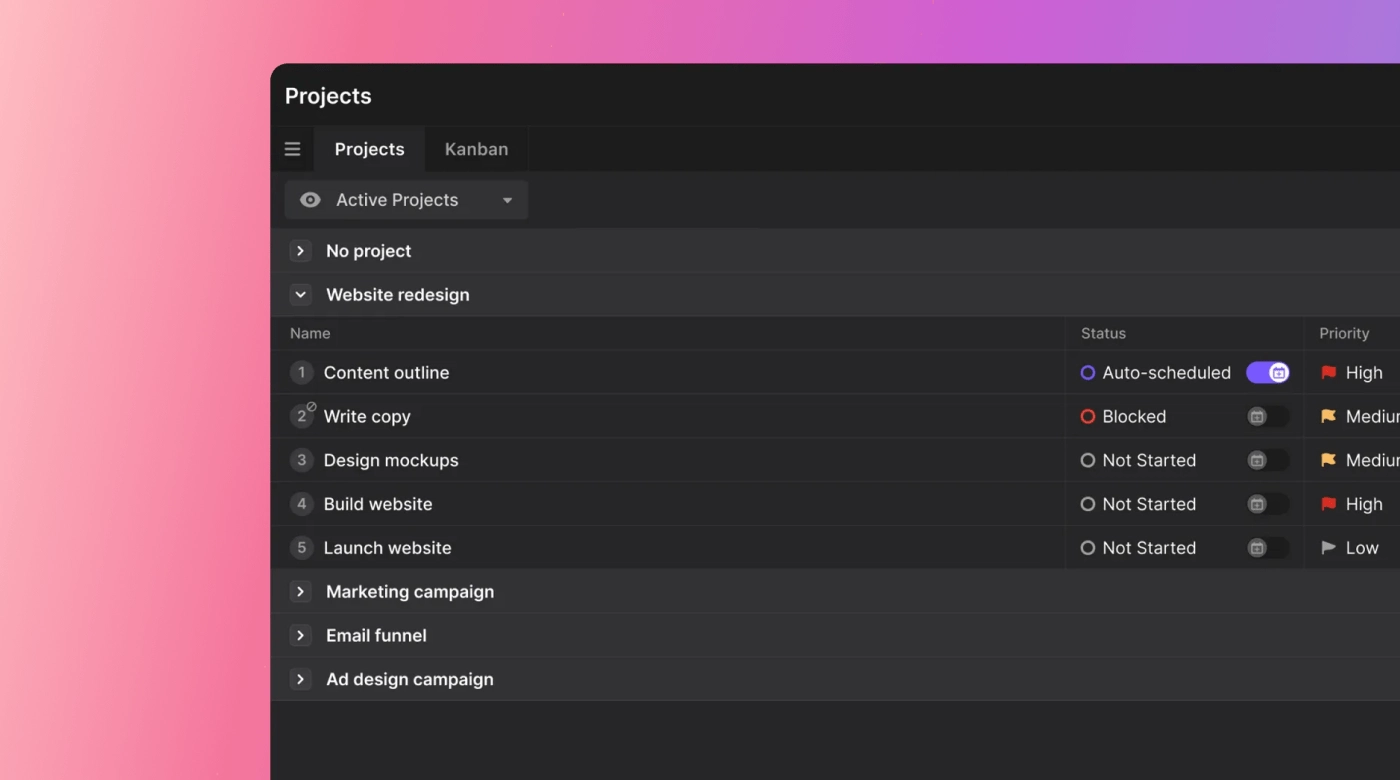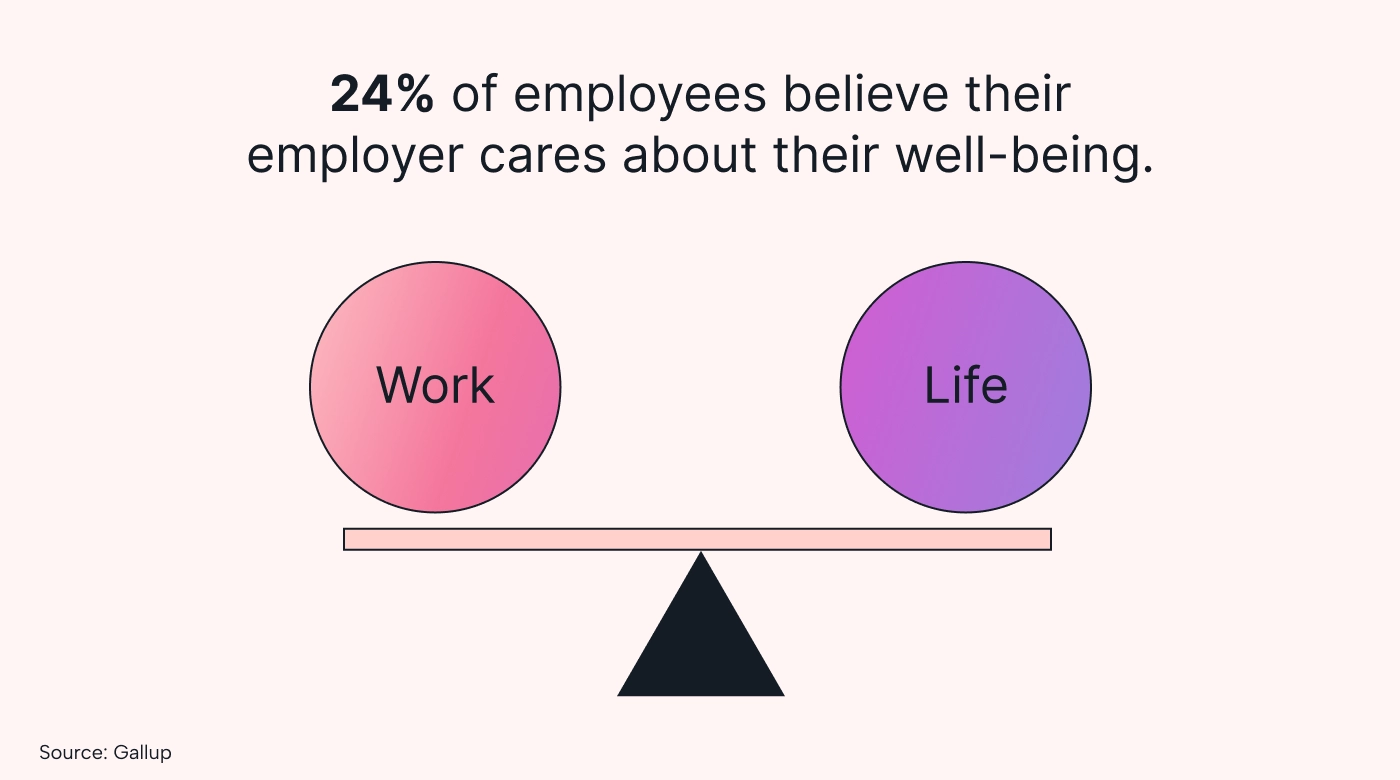Is your team loaded with talent but not achieving what you know they can?
If so, you might have a culture problem.
A strong team culture is the secret sauce that transforms a simple group of people into a high-performing team. Members are motivated to perform at their best not only to reach their individual goals but also because they care about their fellow team members.
If you’re ready to take your team from good to exceptional, then you’ve come to the right place. This article dives into top strategies for developing a next-level team culture.
What is team culture?
Team culture is the set of attitudes, beliefs, values, and behaviors that drive individuals to work together toward a shared purpose. A strong culture is one in which the team members are highly motivated to collaborate and consistently have positive interactions.
Even when there are conflicts, the team is still able to function. People are willing to come together to find a resolution and grow from the experience.
A strong culture is most likely to develop when the team norms, values, and mission are consistently communicated.
Team culture influences employee satisfaction, engagement, and retention. While the top reasons employees leave their jobs are the desire for better pay and career advancement, the workplace environment is a close third. In fact, 57% of employees have left a job where they felt disrespected.
Don’t let this be the case with your organization.
What is the difference between team values and team culture?
Team values, which include trust, accountability, and inclusivity, set the standard for how team members interact with each other.
 |
The values a team identifies with go a long way toward informing its culture. However, team culture also includes the attitudes, beliefs, and work practices that team members demonstrate daily.
In essence, team culture is the result of team values being put into practice.
Why is a positive team culture important?
A positive team culture increases employee engagement, development, retention, and productivity.
Let’s discuss each of these in turn.
More engaged employees
Engaged employees bring their best to the table because they know their contributions matter to the organization.
They demonstrate 81% less absenteeism, making them more likely to attend meetings, master deadlines, and complete projects successfully.
Employees who are aligned with what matters to them also demonstrate increased collaboration and communication.
Improved employee development
Employees who are part of a positive team culture are likelier to want to expand their roles and responsibilities. They seek ways to support their team through upskilling, training, or mentorship opportunities.
Better retention
Employees tend to stay with businesses in which they feel valued.
 |
Businesses that focus on developing a strong culture and enhancing employee engagement report an 18% reduction in turnover.
Increased productivity
Employees who work well together are more effective. Their level of trust is high. As such, they are willing to work together to solve problems and take on difficult tasks to support one another.
Improved productivity leads to boosts in performance outcomes, too.
Team culture examples to inspire your own
There’s no one perfect team culture. Instead, there are different types. What type works for your business depends on your industry, the type of work you’re doing, and the individuals that make up your company.
Here are some different types to consider:
Collaborative team culture
Teams with a collaborative culture prioritize coming together to pursue their goals. You’ll find an emphasis on helpful communication strategies, positive interactions, and proactive problem-solving.
Communication processes in this kind of team culture are transparent, and everyone is encouraged to contribute.
Competitive team culture
A competitive team culture is all about the wins.
Teams are encouraged to engage in competition to achieve their goals. This competition may range from friendly to fierce, with bonuses or other incentives tied to performance.
Personal and professional development is highly encouraged in this kind of culture, and employees take tremendous pride in their team’s achievements.
Customer-focused team culture
Some businesses employ a customer-focused culture in pursuit of their primary objective: maintaining customer satisfaction and boosting engagement.
However, businesses that prioritize the customer don’t ignore their individual team members. Employees are encouraged to share ideas, raise concerns, and work collaboratively to address issues as they arise.
Traditional (or conventional) team culture
With a traditional culture, managers lead the way. While employees are encouraged to collaborate, they are also expected to operate within clearly defined roles. These teams also avoid taking risks, as the members work within fairly rigid parameters.
As you address your team’s culture, you’ll need to consider factors such as the nature of your business, your primary goals and objectives, and the characteristics of your team.
How do you build a good team culture?
If you’re ready to build a good (or great) team culture, here’s what you’ll need to do:
Start with a shared purpose
Strong teams are united by a common purpose. If you haven’t already, it’s time to address your mission statement.
 |
Although mission statements are common in many companies, you’ll want to make sure that yours is unique to your team.
Your team mission statement should include the team’s purpose and values, an inspirational message, and the steps needed to achieve goals. Use examples from other teams to help guide you, and include your team members in the process to increase buy-in.
Once you’ve established your mission statement, ensure your team’s goals and objectives are clear, time-driven, and attainable.
Timelines for each project step should be posted or readily accessible for reference.
Set the stage for successful team goal-setting by getting everyone to the table. Identify what you want to achieve, gather as much input as possible, and reevaluate regularly.
In a strong team culture, every member knows their role and responsibilities. Once you’ve established individual assignments, you’ll be better positioned to identify gaps and troubleshoot as needed.
Finally, as your team develops, establish an open-door policy to allow for questions and concerns.
Establish clear communication channels
Each team member should have easy access to your company’s communication channels.
Encourage an atmosphere of open collaboration and provide opportunities for employees to share information through formal and informal channels.
Transparent communication and processes cultivate sound relationships as employees develop a sense of trust with their employer and each other.
Positive cultures have clear expectations, too. Set team norms for communication, both in person and in written form. Identify when responses to questions or concerns should be expected, and outline the process for when you or your employees will be out of the office.
Model positive communication strategies for your members to show them what’s expected. This could be a part of your mission statement or team norms. Identify the proper channels for communicating frustrations or sharing concerns.
Practice conflict resolution tactics by demonstrating active listening, encouraging employees to share their concerns early, and showing empathy for each person’s perspective.
Above all, be consistent. Frustration mounts when employees don’t feel like they’re in the loop. Provide regular updates, check-ins, and guidelines for them.
 |
Take advantage of Motion’s Project Manager tool to ease communication and collaboration among your team members.
Motion streamlines project management by taking tasks and automatically assigning them to team members. Each person receives a customized schedule outlining their responsibilities and space to ask questions or comment.
Make it personal
A strong team culture recognizes how team members contribute to the bigger picture.
Identify personality characteristics and how they might best suit the team’s needs. For example, extroverts might be well-suited to lead team meetings or address the larger group with updates.
Know your employees’ strengths, interests, and professional goals. Taking a moment to chat about their favorite sports team or showing that you remember their partner’s name shows your investment in them as a person, too.
Provide support, including mentorship or training opportunities, to help your team achieve their professional goals.
Strengthen connections with icebreakers to kick off your weekly meetings. For example, “What’s your favorite dessert?” or “Tell us about your first concert” keeps things easy and informal.
Set up chat spaces for employees to connect about projects (and ask about each others’ weekends, too).
 |
Plan meet-ups outside of the office. Send an invitation to happy hour or arrange lunch at a nearby restaurant. Extend your get-together to weekends. Invite everyone for an afternoon of bowling or head to an escape room together.
Knowing your employees’ likes and dislikes will make it easier to celebrate them.
Recognize accomplishments (and problems)
While you may already suspect recognition is vital in the workplace, here’s the proof: employees who are recognized at work report having a higher quality of life overall than employees who aren’t.
Not only is it important to recognize employees, but this recognition also needs to be consistent and genuine.
Include both private and public acknowledgments. Send a quick thank-you email or shout out a team achievement during your regular check-in meetings.
Determine what kinds of company-based rewards and incentives you can provide. Can employees expect promotions or raises? If so, how often? What will bonuses be tied to, and when can they be expected?
Give your employees a boost with additional paid time off (PTO) or an unexpected afternoon off.
Don’t ignore the flip side of this, though. Issues will arise regardless of the kind of team culture your business has. So, review any problems that pop up promptly and proactively. Give team members opportunities to practice conflict resolution and step in when needed.
Anticipate possible issues with your team as each project continues, and brainstorm solutions from the get-go so you’re ready to act when you need to.
Encourage work-life balance
Overworked and overburdened employees can’t bring their best to the table.
Only 24% of employees believe their employer cares about their well-being. So, support your team by promoting a solid work-life balance.
 |
Those who feel supported are much less likely to experience burnout or leave your organization.
Employ top strategies for establishing work-life balance. For instance:
- Set clear boundaries between employees’ personal and professional lives.
- Consider adopting flexible work schedules.
- Prompt employees to take breaks, scheduled lunch hours, and PTO.
- Encourage employees to ask for help (if too many deadlines are approaching or a personal situation crops up, for instance).
- Consider how the needs of remote and hybrid workers may vary. Offer resources for time management and access to the right tools.
- Set accessible communication and collaboration times, considering different time zones and flexible schedules to ensure equal opportunity.
You can also invest in a robust platform to help you. Motion’s Meeting Assistant enables you to set dynamic scheduling rules based on your team’s needs and check everyone’s availability at a glance.
Revise and adapt as you go
While maintaining a strong culture takes time and effort, the results will be well worth it once you see how effective collaboration, team engagement, and productivity soar.
Keep tabs on your team culture by eliciting feedback regularly from your team members.
You can also send out pulse or employee surveys, allowing employees to remain anonymous through a physical or virtual suggestion box. Schedule regular 1:1 check-ins.
Finally, commit to responding to concerns and resolving issues promptly and consistently to watch your team thrive.
Boost your team collaboration with Motion
Building a strong team culture takes time. But the benefits are worth it.
Start with your mission statement. Develop and share your team goals and objectives. Recognize individual accomplishments and encourage a healthy work-life balance.
You’ll also need to establish a clear, transparent communication system.
With Motion’s Project Manager, everything is at your fingertips. Each team member will receive a schedule tailored to their needs. You can take notes, attach documents, and check with members about their tasks at every stage.
Sign up for a risk-free 7-day trial today to get started.

Jodi Monroe is a content writer and blogger in the SaaS space. When not at her laptop, she’s planning her next travel adventure.




